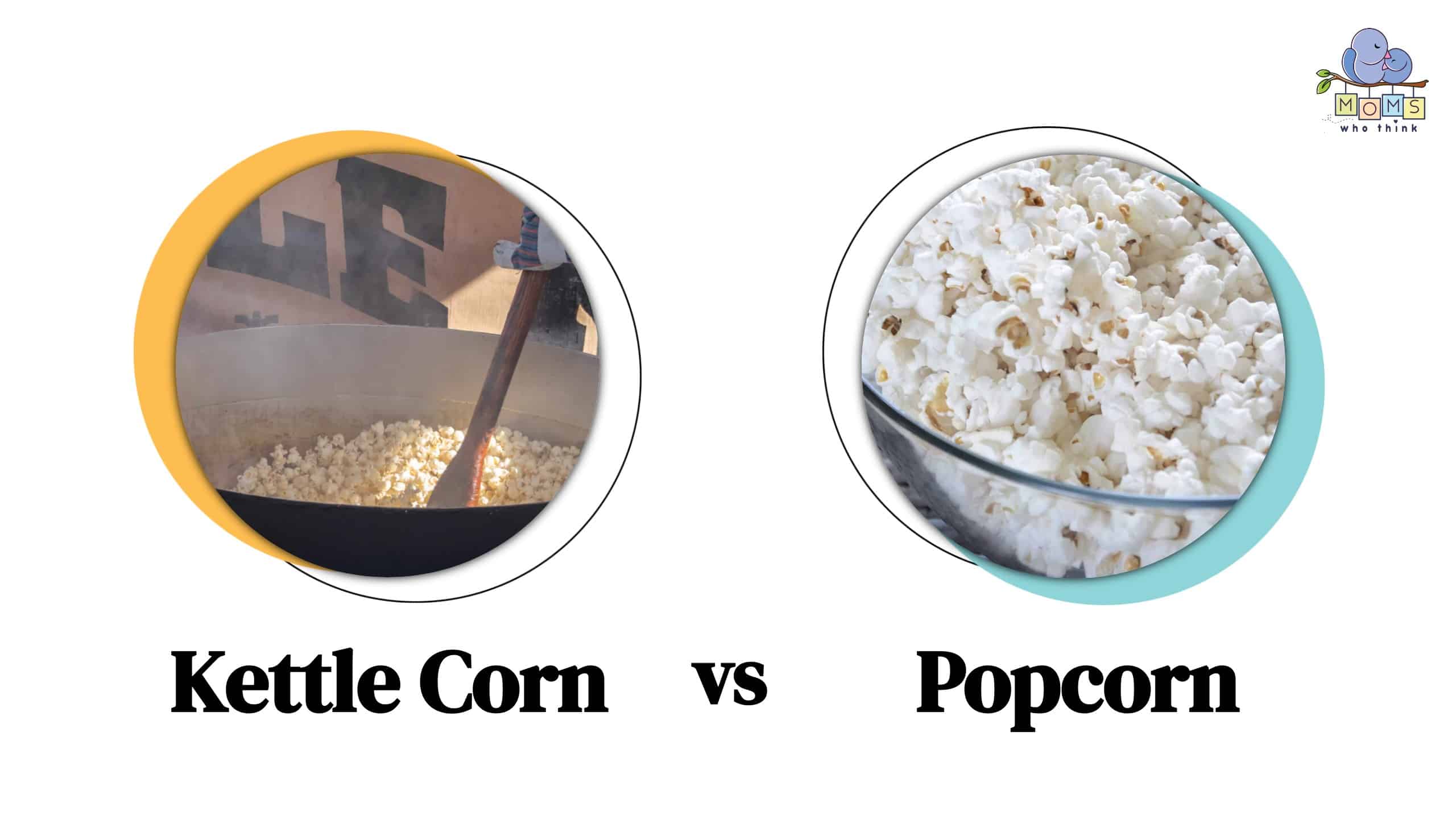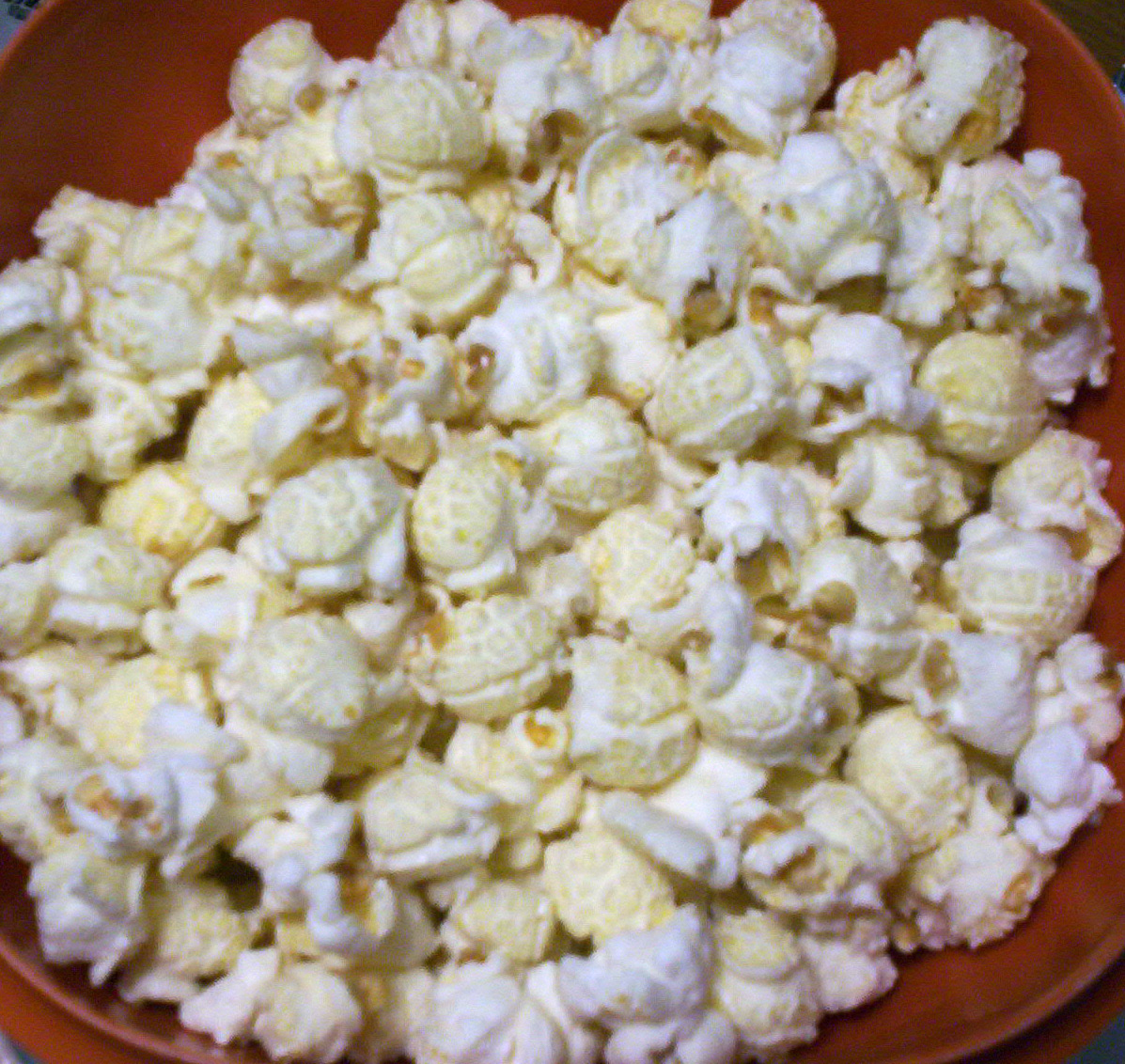Kettle corn is called so because it is traditionally made in large iron kettles. A popular sweet and salty snack, kettle corn is created by popping maize kernels in a mixture of sugar, salt, and oil.
The resulting popcorn has a delightful balance of flavors, making it a hit at fairs, festivals, and movie theaters alike. Originally enjoyed by early American settlers, kettle corn has endured for generations and continues to be a beloved treat for people of all ages.
The combination of crunchy, sweet, and savory makes it a unique and irresistible indulgence that appeals to a wide range of taste preferences. Understanding the history and production process involved in creating kettle corn adds depth to the appreciation of this timeless snack.
History Of Kettle Corn
Kettle corn is a delicious snack enjoyed by people all over the world. But have you ever wondered why it’s called kettle corn? This sweet and salty treat has a fascinating history that dates back centuries. In this article, we’ll explore the origins of kettle corn and its popularity throughout history.
Origins Of Kettle Corn
The origins of kettle corn can be traced back to the early 18th century, where it was first believed to have been introduced by German-Dutch settlers in the United States. These settlers brought with them a traditional recipe for a sweet and salty popcorn treat, which they would make in large cast-iron kettles over an open fire. The combination of sugar, salt, and heat created a unique flavor that quickly attracted a following.
Popularity Throughout History
As the years went by, kettle corn continued to gain popularity, especially at fairs, carnivals, and other outdoor events. Its distinctive taste and aroma made it a crowd favorite, and it quickly became a staple of these festive gatherings. During the Great Depression, kettle corn became a popular snack due to its affordability, providing a small indulgence during challenging times.
In recent years, kettle corn has seen a resurgence in popularity, thanks to its nostalgic appeal and unique flavor profile. It has become a beloved snack not only at festivals and fairs but also in movie theaters, sporting events, and even as a gourmet option in specialty popcorn shops. Its ability to balance the sweetness of sugar with the savory taste of salt continues to captivate taste buds and keep people coming back for more.

Credit: www.momswhothink.com
The Making Of Kettle Corn
Ingredients Used
Traditional kettle corn is made with just a few simple ingredients that transform into a delicious sweet and salty treat. The key ingredients to make kettle corn include popcorn kernels, sugar, oil, and salt. The use of these basic ingredients in perfect proportion is what creates the distinctive flavor of kettle corn.
Cooking Process
The cooking process for kettle corn is a careful balance of heat, timing, and stirring to ensure the perfect blend of sweet and salty in each batch. Here’s a simple guide to the cooking process:
- Heat the oil in a large pot over medium-high heat.
- Add popcorn kernels and sugar to the pot, stirring quickly to coat the kernels with the sugar.
- Cover the pot with a lid and shake gently to keep the kernels moving.
- After a few minutes, the kernels will start popping.
- As the popping slows down, remove the pot from the heat and continue to gently shake to evenly coat the popcorn with the caramelized sugar.
- Finally, sprinkle salt over the freshly made kettle corn and enjoy!
Unique Characteristics Of Kettle Corn
Kettle corn is a timeless snack that has been loved for generations due to its unique characteristics. Its delightful combination of sweet and salty flavors, as well as its distinctive crunchy texture, sets it apart from other types of popcorn. Let’s delve into the specific attributes that make kettle corn a truly special and enjoyable treat.
Sweet And Salty Flavor Profile
Kettle corn is renowned for its delectable sweet and salty taste, which captivates the taste buds of those who enjoy it. The sweetness comes from the caramelized sugar, while the saltiness adds a savory contrast, creating a harmonious and irresistible flavor experience. This distinctive blend of flavors is a key factor in what makes kettle corn so addictive.
Crunchy Texture
One of the most notable features of kettle corn is its satisfying crunchy texture. The popcorn is carefully popped in a kettle, where it’s perfectly coated with the sweet and salty mixture, resulting in a delightful crispiness. The crunchiness adds an enjoyable element to the snacking experience, making every bite a pleasurable sensation.

Credit: en.wikipedia.org
Kettle Corn Vs. Regular Popcorn
When it comes to popcorn, we often think of two popular varieties: kettle corn and regular popcorn. While both share the same base ingredient – corn kernels, there are some key differences when it comes to taste and cooking methods.
Differences In Taste
Kettle corn and regular popcorn have distinct flavor profiles that set them apart.
- Kettle Corn: Kettle corn is known for its unique combination of sweet and salty flavors. The popcorn is coated with a sweet glaze made from sugar, salt, and oil, giving it a deliciously addictive taste. The glaze caramelizes as it cooks, creating a crunchy and irresistible snack.
- Regular Popcorn: On the other hand, regular popcorn is typically seasoned with salt or butter. This classic flavor choice allows the natural taste of the popcorn to shine through, resulting in a savory and satisfying snack.
Cooking Methods
The process of making kettle corn and regular popcorn also varies, leading to differences in texture and overall eating experience.
| Kettle Corn | Regular Popcorn |
|---|---|
| Kettle corn is traditionally cooked in a large kettle or pot. | Regular popcorn is commonly prepared using a stovetop pan or a specialized popcorn popper. |
| The kettle is heated, and the corn kernels, along with the sugar, salt, and oil, are added. | The corn kernels are heated in a pan with oil until they pop and transform into fluffy popcorn. |
| The continuous stirring prevents the sugar from burning and ensures an even coating on the kernels. | Regular popcorn does not require constant stirring, allowing the kernels to pop evenly. |
| The resulting kettle corn has a slightly crunchy texture due to the caramelization of the sugar glaze. | Regular popcorn tends to have a lighter and fluffier texture. |
So, whether you prefer the sweet and salty goodness of kettle corn or the more traditional taste of regular popcorn, both varieties offer delicious options for snack time. Now that you understand the differences in taste and cooking methods, you can make an informed choice when it comes to enjoying your favorite popcorn treat.
Cultural Significance Of Kettle Corn
Kettle corn, with its irresistible aroma and unique flavor, holds a special place in the hearts of people around the world. Beyond being a simple snack, kettle corn possesses a deep cultural significance that has been celebrated for centuries. From its role in festivals and fairs to its symbolism in different cultures, kettle corn has become a cherished part of our culinary traditions.
Role In Festivals And Fairs
- Kettle corn has been a staple at festivals and fairs for generations.
- Its presence adds to the joyful atmosphere and enhances the overall experience for attendees.
- At outdoor events, the tantalizing smell of freshly popped kettle corn draws people in, enticing them to indulge in this delightful snack.
- Whether it’s a local fair or an international festival, kettle corn brings a sense of nostalgia and tradition to the celebration.
Symbolism In Different Cultures
Kettle corn holds symbolic meaning in various cultures, representing different concepts and traditions.
| Culture | Symbolic Meaning |
|---|---|
| Native American | In Native American cultures, kettle corn is associated with abundance and prosperity, often used in celebrations and rituals to attract good fortune. |
| European | In European folklore, kettle corn is believed to ward off evil spirits when consumed during special occasions such as weddings or religious ceremonies. |
| Asian | In Asian cultures, kettle corn is seen as a symbol of joy and happiness, often exchanged as gifts during festive gatherings. |
The universal appeal of kettle corn lies not only in its delicious taste but also in the cultural significance it carries. Whether enjoyed at a local fair or embraced as a symbol of luck and happiness, kettle corn has transcended boundaries and become an integral part of our shared human experience.
Modern Variations Of Kettle Corn
If you think kettle corn is limited to the traditional sweet and salty flavor, think again! In recent years, kettle corn has undergone a modern makeover with an array of exciting variations that cater to different tastes and dietary preferences. From unique flavors to healthier alternatives, let’s explore the delightful world of modern kettle corn.
Flavored Kettle Corn
Forget the ordinary and embrace the extraordinary with an explosion of flavors in kettle corn. Enter a realm where creativity takes center stage and taste buds are tantalized. Flavored kettle corn is a delicious way to enjoy this classic snack. From tangy BBQ to zesty jalapeno, and from cheesy cheddar to irresistible caramel apple, there is a flavor to suit every palate. Whether you’re craving something savory or sweet, these flavored varieties add a burst of excitement to your snacking experience. Indulge in the bold and adventurous flavors that will leave you craving for more.
Healthier Alternatives
If you’re someone who prefers to indulge in guilt-free snacking, you’ll be pleased to know that there are healthier alternatives to traditional kettle corn available in the market. These alternatives are prepared with wholesome ingredients and are often lower in calories, fat, and sugar. With the increasing focus on health-conscious choices, kettle corn manufacturers have introduced options like organic kettle corn, gluten-free kettle corn, and even air-popped kettle corn. These healthier alternatives ensure that you can enjoy the irresistible taste of kettle corn without compromising your wellness goals. So snack away without any guilt!

Credit: en.wikipedia.org
Frequently Asked Questions For Why Is It Called Kettle Corn
What Is The Origin Of Kettle Corn?
Kettle corn originated in the United States during the 18th century. It was initially made by early settlers using iron kettles to pop corn over an open fire. The combination of sweet and salty flavors quickly became popular at festivals and fairs.
How Is Kettle Corn Different From Regular Popcorn?
The main difference between kettle corn and regular popcorn is the addition of sugar during the cooking process. This gives kettle corn its unique sweet and salty taste, whereas regular popcorn is typically seasoned with just salt or butter.
Why Is It Called Kettle Corn?
Kettle corn gets its name from the large cast iron kettles that were traditionally used to make it. The corn kernels are heated in the kettle along with oil, sugar, and salt, creating the sweet and salty flavor that is characteristic of this popular snack.
Conclusion
The origins of the term “kettle corn” can be traced back to its traditional method of preparation in large iron kettles. This unique combination of popcorn, sugar, and oil creates a delightful snack that satisfies both savory and sweet cravings.
The name itself evokes nostalgia and a sense of comfort, making kettle corn a beloved treat enjoyed by many.
